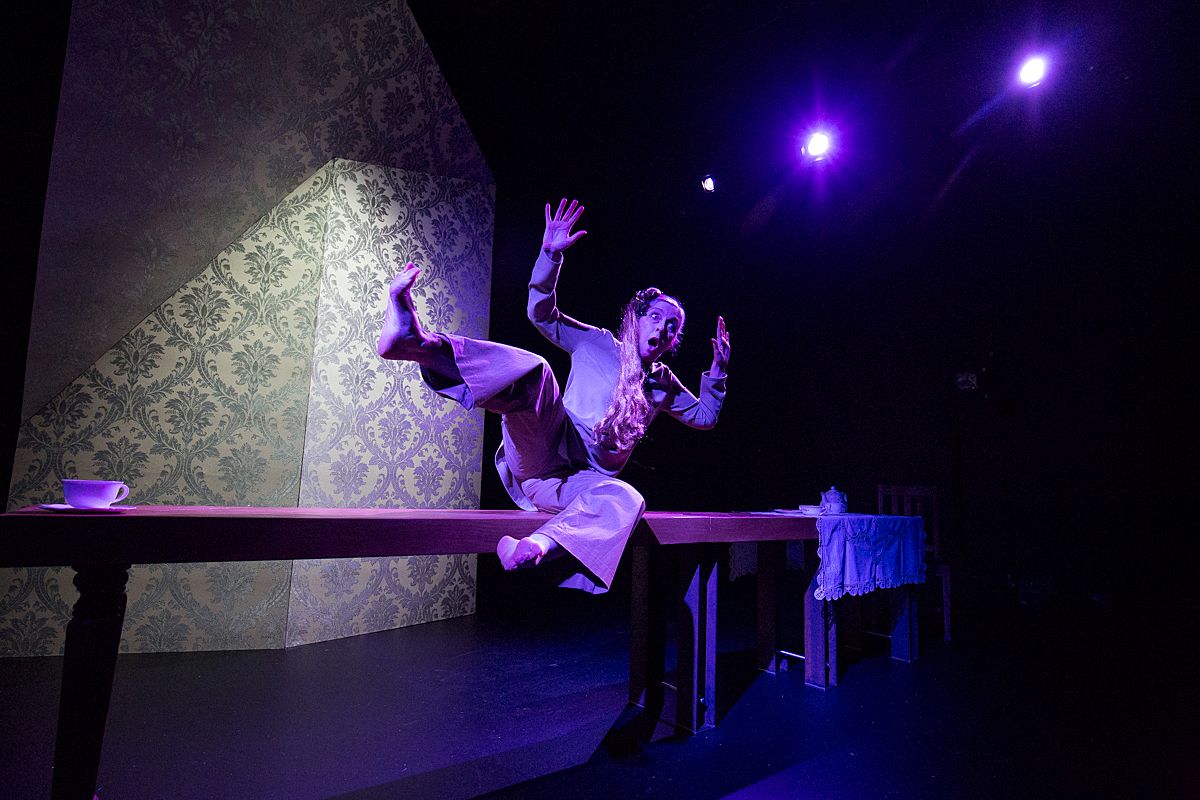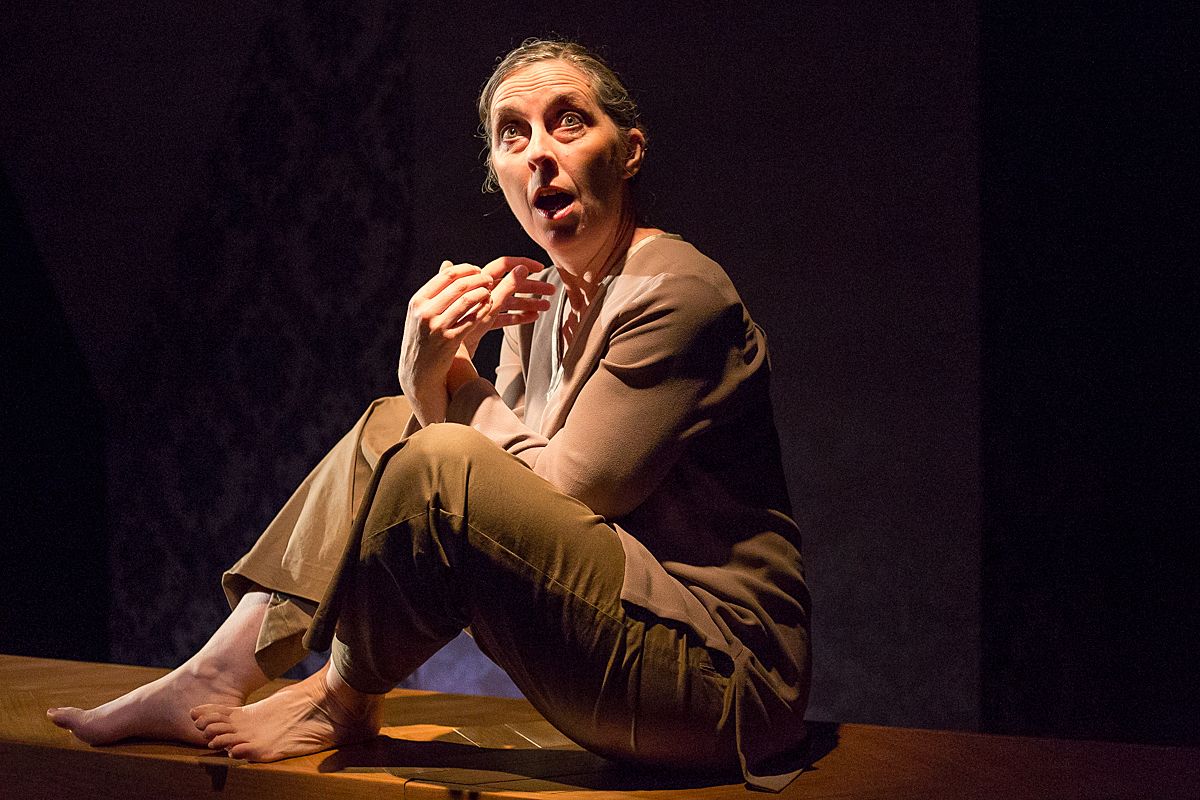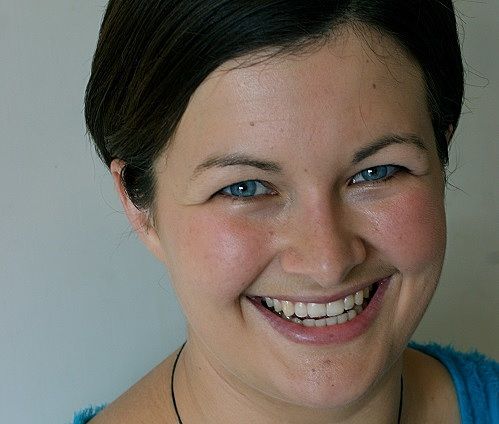Mild Conflict: A Review of In The Wars
Plateforme Théâtre's latest visits people, dogs and Barbie dolls on the ground in conflict zones around the world; Shannon Friday considers these vignettes and finds them weirdly similar.
Plateforme Théâtre's latest visits people, dogs and Barbie dolls on the ground in conflict zones around the world; Shannon Friday considers these vignettes and finds them weirdly similar.
A mentor once told me that we don’t find the universal by going big. Instead, we find it through familiar details in a strange setting. That sentiment is close to the premise of In The Wars, written by performer Juliet O’Brien and directed by Jorge Picó. Together they’ve combed the newspapers and history books for unusual perspectives on war and they’ve found some doozies. We meet a Barbie doll buried in rubble in the Gaza Strip, a bomb-sniffer dog suffering from PTSD, a young woman desperately dragging her father’s body away from a soldiers’ camp. But for all its inventiveness and for all of O’Brien’s physical skill, In The Wars does little to personalize or explore its grand theme – war causes innocents to suffer – and sinks into a quagmire of familiar platitudes.
In painting their landscape of life in war, from birth until after death, O’Brien and Picó use some spectacularly strange perspectives that give O’Brien scope to really revel in her weirdness. They start from the point of view of an unborn child. The fetus curls in the darkness, reacting to the changes in her mother's heartbeat and body temperature, tenderly expressed as changes in her “warmth”, and revealing how the trauma of war affects not only those who live through it but the generations that follow. The unborn child is unable to understand or imagine the stakes she faces and so it’s up to us to interpret what’s happening in the world, outside her mother’s body. This ambiguity leaves me imagining the worst; I’m frightened for this vulnerable child, aware too of how little I know or can understand about the upheaval of war.
Later, a young woman slowly drags an empty pair of boots across the stage. O'Brien's neck and arm muscles cord and tense with each tug, trying to move the boots just one more inch away from... where-ever. Jennifer Lal's cold, angled lights outline O'Brien as she struggles, the sharp shadows making her every move feel furtive and hopeless. Watching someone struggle so literally with something so far beyond their ability to fix, knowing the toll that must take, is a heartbreaking glimpse into another person’s suffering.
These glimpses are fleeting, though, because every scene has the same basic shape: O’Brien enters with a strong physical offer and then unloads overwritten exposition on us. Given that the programme emphasizes that all the snippets are “inspired by true stories”, In The Wars has the potential to mine a rich vein of varied experiences. O’Brien and Picó have found stories that mix absurdity and tragedy, but they consistently abandon their setups. They marry the physical expression of detail that O’Brien excels at – the expression that would make these stories personal – to underdeveloped stereotypes and flat, one-note monologues that feel like imitations of stories already told. Each scene is cut from the same template, and that destroys the uniqueness of each individual’s trauma from their war and the complexity of O’Brien’s physical work.
Each scene is cut from the same template, and that destroys the uniqueness of each individual’s trauma from their war and the complexity of O’Brien’s physical work.
For example, one character is a dog psychologist in the United States military. This much is true: in 2011, The New York Times reported on how the US military employs animal behavioural psychologists to determine if military dogs suffer from PTSD and how they may be able to recover. But O'Brien conjures up a dog psychologist who is less Cesar Millan and more George Patton, a stereotype she and Picó have lifted from films like Full Metal Jacket and GI Jane. The psychologist leans into his ‘client’, all sharp angles, pummeling the dog with the history of military service animals in order to shame her back into the field. Blurry slides of war animals hit the angled walls, the images distorted so badly that I can’t make out half of them, even from the second row. This focus on the history deflects from the relationship onstage and the ethical questions it raises: as absurd as it may seem to employ animal psychologists, what does the military’s willingness to take seriously the emotional life of a dog suggest about the ethics of using animals in combat roles? Instead, it’s a clumsy frame for a history lecture and an uninteresting way to bring its (much more interesting) premise to life.
That’s the biggest issue with In The Wars: it’s never clear what the makers need us to take away from the stories they’ve found, what insights they’ve gained and must share. The programme’s half-hearted nod to its true sources makes me think they want to personalize stories of war but their imagery is clichéd, their characters stereotypes, their politics predictably hand-wringing and their dramatic conflicts either tangential to war or totally non-existent. In The Wars feels like an experiment in physical performance rather than a show that needs to speak to an audience, that has something urgent to say about the topic of war.
O’Brien and Picó finish on a grandmother telling her 40-something daughter about their family’s service in World War I, because it's a Kiwi play about war so of course they do. This long scene plays straight the story of the sweet boy who went off to war and came back a changed man; an innocent devastated by shellshock, a brave young man who must be remembered as a hero. That picture sits oddly against other vignettes, like their bullying dog psychologist and their sadistic Russian soldier. O’Brien and Picó dip into the legacy of war and how and why we choose to remember these conflicts the way we do.
At the same time, though, they also desperately want to believe the story they’re telling about the nobility of the man who leaves his home to fight for what’s right. They want us to believe it, too, and they try to avoid having us think in that moment about that man’s very job in war – to kill people. O’Brien and Picó’s need to preserve the idea of a “noble soldier” clashes with their thesis that “war causes suffering of innocents” by not acknowledging the costs that can come both as a victim of violence and as its enactor. In a show that is all about the awfulness of one person inflicting trauma on another, not acknowledging the cognitive dissonance at the base of this soldier’s brokenness leaves all the ideas about war’s tragedies feel empty and worn out.
In The Wars is a mess of cliches and it leaves me underwhelmed and alienated (and not in a Brechtian way). It’s a bunch of disjointed ideas that feel familiar and simplistic, that never really challenges or demonstrates how war destroys people, both physically and mentally, preferring instead to digress or retreat into stereotypes that do nothing to explore or personalize the truly awful experiences they reference. The sentiment they end on is heartfelt, as O’Brien pleads for us to remember that “Peace is precious; we mustn’t ever forget to take care of it.” It’s huge and heartfelt; it’s also simple: lacking nuance or detail. In a show that is all about digging into true human wartime struggles, we’re left without something specific or familiar in this strange setting, and so all we get is big faceless truisms.
In The Wars runs from 15 to 26 August at BATS Theatre.
Tickets available here.



